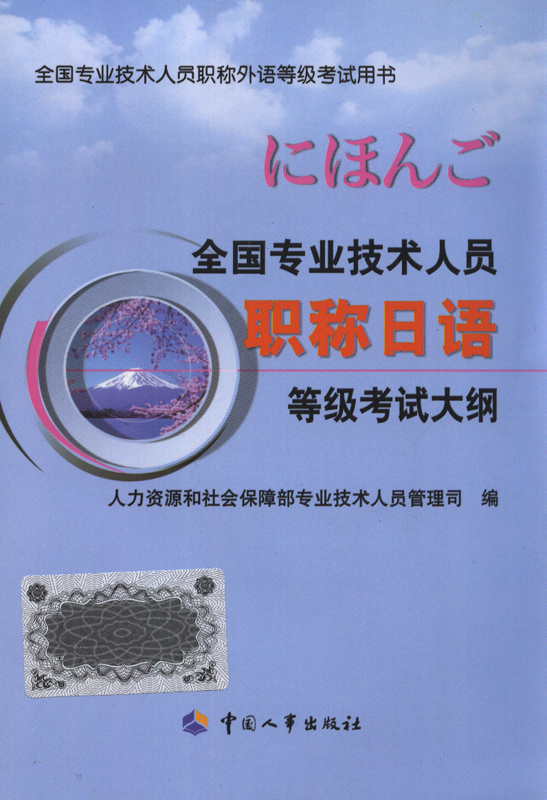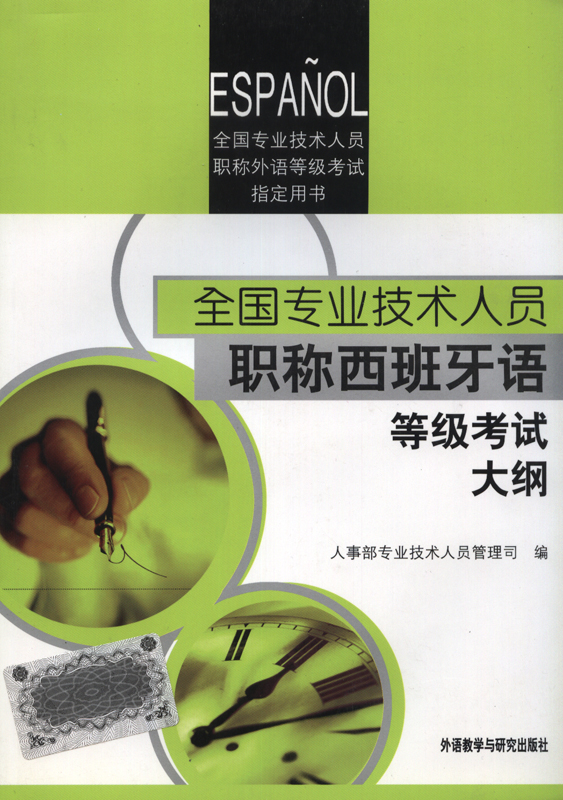名词性从句是在句子中起名词作用的主谓结构,它可以在主从复合句中作主语、宾语、表语、介词的宾语以及同位语。
1. 主语从句
主语从句可以由连词that,wh-疑问词或名词性关系词引导。
⑴由连词that引导:从句可以位于句首,但常常用形式主语it替代,从句本身则放在主句后面,如:
That he will come to the party is certain. It happened that the harvest was bad that year. Is it true that she has never been there?
通常在口语或非正式文体中,that常可省略,但必须是在用先行词it的情况下,如:
It‘s a pity (that) you are leaving.
⑵由wh-疑问词引导:从句既可以前置,又可以借助于先行词it后置。如:
Who cleaned the meeting room is unknown. It‘s still a question when we shall have our sports meet. It is uncertain whether he will come.注意:在疑问句中,wh-疑问词所引导的从句不能位于句首,如:
Is it known where she went?
⑶主语从句也可由名词性关系词引导,这类从句只能位于句首,如:
Where she went was Los Angeles. What will be,will be. Whomever you invite will be welcome.
2. 宾语从句
⑴宾语从句可用that引导,这时that仅起连接作用,不充当从句中的成分。如果连接词要在从句中起语法作用,就要使用连接词what等来引导从句。
I believe that he is honest. We fully understood what he meant.
⑵有些形容词的后面也可跟宾语从句。这类形容词有:certain,afraid,aware,sorry,sure,worried等。如:
I‘m afraid that you are wrong on this point. I am aware that you have been exceptionally kind to me.
⑶宾语从句也可以用how,when,who,which,where,why等词引出,此时即使主句是一个疑问句,宾语从句也必须保持陈述句的语序。如:
Go and ask why he was late yesterday. Can you tell me where the hospital is?
⑷跟在介词后面的宾语从句一般不能由that来引出,只限于except,in,but,besides,save等五个介词的宾语从句,其它介词后面不能跟由that引出的宾语从句,而只能跟由what,how,whether等引出的宾语从句。
You are wrong in that you took effect for cause. I would go with you,except that I have to work that day. They were arguing about what was to be done. I‘m thinking of whom I should ask for help.
3. 表语从句
表语从句通常由that引出,当然how,why,where,when等也可以引出表语从句。常见的表语从句有下面两种句型:
⑴“The reason…that”:表示“原因是……”。如:
The reason for leaving was that it was too cold.
⑵“It (This,That) is because…”:表示“这是因为……”,“这是由于……缘故”。如:
This is because iron contains more carbon than steel.
4. 同位语从句
同位语从句表示与之同位的名词中心词的实际内容。
⑴同位语从句起进一步解释说明先行词的作用,通常由that引导。同位语从句的先行词通常是一些抽象名词,如:appeal,idea,truth,fact,theory,belief,plan,hope,proposal,rumor,suggestion等。
There is truth in the old saying that necessity is the mother of invention.
⑵由wh-疑问词引导,如:
I have no idea when he will come. It is difficult to answer your question why I did it.
⑶由名词性关系词引导,如:
Fame and fortune—what others sought after with zest—was all rubbish to him.
⑷注意同位语和that引导的定语从句的区别:that在同位语从句中只起引导从句的作用,本身并无意义,也不在句子中担当任何成分;而定语从句的that既引导从句又充当句子成分。
The news that he intended to come gave us much pleasure.(同位语从句,that不作句子
分。)
He is the best speaker that addressed the meeting.(定语从句,that在从句中作宾语,指代的先行词是主句中的主语。)
5.定语从句
定语从句是在句子中起形容词作用的主谓结构,通常修饰它前面的名词或代词,即它的先行词。定语从句是由关系代词和关系副词引导的。
1.关系代词引导的定语从句
⑴引导定语从句的关系代词有:who,whom,whose,which,that.
⑵关系代词在从句作主语、宾语、定语和表语的作用;当作宾语时,关系代词常常可省略。如:
This is the girl (whom) you‘ve been looking for.
⑶当定语从句所修饰的先行词是人或人格化的动物时,引导词用who,whom或whose;
如果先行词是无生命的东西,用关系代词which;而that可用于以上两种情况。
The man who robbed you has been arrested. That is the book which cost me twenty dollars. Which还可以指婴儿、动物和表示单数意义的集合名词,如:
The baby (which) the nurse brought in was Mary‘s child.⑷关系代词that和which的语法区别当先行词的前面有形容词的最高级修饰时,通常用that而不用which.如:
The final match is one of the most exciting football games that I have ever seen.当定语从句所修饰的先行词的前面有all,any,little,only,much等修饰时,或者这些先行词本身就是all,one,little,much,nothing等不定代词时,通常用that而不用which. I am interested in all that you have told me. It seems that is the only thing that we can do now.
当定语从句作介词的宾语时,只能使用which而不用that. The world in which we live is in constant motion and in constant change.当定语从句是与代词、数词或名词词组连用引导非限定性定语从句时,只能使用which而不用that. I bought a dozen eggs,five of which broke when I dropped the box at my door.
当先行词的前面有the only (first,last,same,next,very)等词修饰时,通常用that而不用which. This is the very movie that I want to see.当被用来指代整个句子,引导非限定性定语从句时,只能使用which而不是that. Things then improved,which surprises me. Her brother snatched the letter away,at which she was furious.
2. 关系副词引导的定语从句
⑴引导定语从句的关系副词有:when,where,why,how等。
⑵关系副词when,where,why在从句中作状语时,可用“介词 which”来替代。如:
The reason why (= for which) he is in hospital hasn‘t been known yet.
3. 限定性定语从句和非限定性定语从句
限定性定语从句与先行词关系密切,用来描述主句所涉及的人或物的具体情况,与主句不可分割。这种从句在口语中前后没有停顿,在文字中前后没有逗号。
非限制性定语从句与先行词之间的关系比较松散,为主句所描绘的人或物提供一些附加情况,并非绝对必要。这种从句在口语中有停顿,在文字中往往用逗号与主语隔开。
另外,非限定性定语从句可用which,who,whose,when,where等来引导,但不可以用that来引导。如:
The wine,which was in the cellar,was ruined.(非限定性)
The wine which (that) was in the cellar was all ruined.(限定性)
在限定性定语从句中,关系代词有时可省略;但是在非限定性定语从句中,关系代词不能省略。
6.状语从句
在句子中起状语作用的句子叫做状语从句。状语从句可以位于句首、句中或句末。位于句首时,从句末通常有逗号与主句隔开;位于句中时,从句的前后都必须有逗号;位于句末时,从句的前面可以不用逗号。状语从句按意义可分为时 间、地点、原因、条件、让步、方式、比较、目的和结果等状语从句。状语从句由从属连词引导。
1.时间状语从句
引导时间状语从句的连词有:after,as,before,once,since,till,until,when,whenever,
now (that),as soon as,as long as,no sooner…than等。
有些名词短语也可以引导状语从句,如:
every time,the moment,the instant. When I saw her,she was watching closely at the photo on the wall. As the sun rose,the fog dispersed. The instant he received the letter,he started off at once. Every time he went to Beijing,he used to visit the Great Wall. as,when和while都可以表示主句中动作发生的背景,也可以表示主句的动作与从句的动作同时发生,如:
As he stood there,he heard what they were talking about. I stood up and wanted to go out,when she came in. till和until在主句谓语为持续性动词的肯定式时,作“直到……为止”解,在主句谓语为瞬间动词的否定式时作“直到……才”解,如:
Let‘s wait till / until the rain stops. I did not begin work till / until he had gone. once,directly,the moment,the instant和as soon as都作“一…就”解,通常可以互换,如:
Once you understand this,you will surely make rapid progress in your study.由副词加从属连词no sooner…than,hardly / barely / scarcely…when等引导的时 间状语从句,如果no sooner,hardly,barely,scarcely前置句首,主语与谓语须用倒装结构。如:
Hardly had the film started when they came. No sooner had we reached the top of the hill than we all sat down to rest.
2. 地点状语从句
地点状语从句通常由where,wherever引导,如:
Where there is a will,there is a way. She painted wherever she happened to be.从属连词还能与any,no,every等一起构成复合句,引导地点状语从句。如:
Everywhere you go,you will be warmly welcomed.
3. 方式状语从句
引导方式状语从句的连词有as,as if,as though等,从句通常位于主句之后,如:
He had never blushed as she blushed then.(as作“按照”或“像”解。)
as if和as though都做“好象”解,两者可以互换,从句既可用陈述语气(表示可能符合事实的情况),又可用虚拟语气(表示与事实不符的情况),如:
I remember the whole thing as if it happened yesterday. His mother loves me as if / as though I were her daughter.
4. 条件状语从句
引导条件状语从句的连词有:if,unless,as / so long as,suppose (that),supposing (that),in case,when等。条件状语从句可以分为真实条件状语从句和非真实条件状语从句。
⑴真实条件句真实条件句表示现实或可能的情况,由if引导,它的主句可以是陈述句,疑问句或祈使句,可置于主句之前或之后。
If you heat ice,it melts. If it rained,I went by bus. unless引导的否定条件状语从句,在意义上相当于if…not,如:
Don‘t come unless I telephone. as / so long as,provided / providing (that)意为“只要、如果”,如:
You can borrow this pen as long as you can keep it well. in case在英国英语中表示目的,在美国英语中可表示条件,意为“如果、万一”,如:
In case the house burns down,we‘ll get the insurance money.
⑵非真实条件句请参阅第十一章“虚拟语气”。
5.让步状语从句
引导让步状语从句的连词有:although,though,even if,even though,if,for all that,when,while,whether…or,whatever,no matter what等。
although和though意义一样,都作“虽然、即使”解,都表示让步,一般情况下可互换使用,只是although语气较重,大多置于句首。如:
They are generous though they are poor. Although he was Japanese,he spent most of his life in China. even if
和even though都作“即使”解,两者可以互换使用,如:
She insisted on her own opinion even though / even if he was wrong. if作“即使、虽然”解,也表示让步,如:
If he is wrong,he is honest. whether…or作“不论……是否”或“不论……还是”解,如:
You don‘t have to worry me whether I am well or ill.为了强调让步意义,在正式文体或文学作品中,常用as引导让步从句,从句的补语或状语置于句首。如:
Tall as he was,he couldn‘t reach the top of the shelf. Strong as you may be,you cannot lift it.词尾为-ever的wh-词可以与“no matter wh-词”互换使用,作“无论……”解,后者常用于口语中,如:
Whoever / No matter who rings,tell him I‘m out. Wherever / No matter where he is,he will be thinking of you.由whenever,wherever,however引导的从句,也可以分别看作时 间状语从句、地点状语从句和方式状语从句。把它们当作让步状语从句是因为它们常有no matter when (where,how)的含义。
6.原因状语从句
原因状语从句通常由because,since,as,when now (that),seeing (that),considering (that)等引导。
because,since和as三者的区别如下:
because的语势最强,其次是since,再次是as. because可以回答why引导的特殊问句,而since和as不能。
because引导的从句可以被just,only,simply等副词修饰,也可以用并列连词构成并列的because从句,而since和as则不能。如:
We pardoned him only because he was still young. for表示原因时,作“因为”解,多用于正式文体,有时可以与because换用,但for从句只能置于主句之后。如:
She didn‘t go to school,for / because she was ill. now (that)和seeing (that)都作“既然”解,通常可与since或as换用,如:
Now (that) you have come,you may as well stay. Seeing (that) he is inexperienced,he is not fit for the work.
7. 结果状语从句
引导结果状语从句的连词有:so that,so…that,such that,such…that,that等。
当从句前面有逗号时,so that中that可省略,如:
It was dark,so (that) we could see nothing in front of us.“So 形容词 / 副词 that”是引导结果状语从句的常用结构,如:
He talked so loud that he annoyed the speaker. He was so brilliant that he made a lot of inventions.“such (a) 形容词 名词 that”与“so…that”的意义相同,如:
It was such a hot day that people could not go out. He painted such beautiful pictures that the visitors were lost in admiration. that可以单独引导结果状语从句,如:
The question is of great importance that it cannot be neglected.
8. 目的状语从句
引导目的状语从句的连词有:in order that,so that,so,that,in case,for fear that,lest等。
in order that与so that的意义和用法基本相同,in order that多用于正式文体,常表示经过认真考虑的目的,如:
In order that he would have more space for painting,he bought a big house. You ought to write to him,in order that he won‘t feel we are hiding things from him. So和that可视为so that的省略形式,但不如so that常用,如:
Bring it closer so / that I may see it better. for fear that,in case和lest都表示否定的目的,相当于so that…not或in order that…not,作“以免、以防”解。
He wrote the name down for fear that he should forget it . lest限于正式文体,它所引导的从句中的谓语动词多用should be型或be型虚拟形式,如:
He hid the box lest it (should) be stolen. in case引导的从句谓语既可以用虚拟形式,又可用陈述语气,如:
Better take more clothes in case it is cold. She doesn‘t dare to go out in case she is recognized / (should) be recognized.
















